
Image: DALL-E Generated art depicting this report’s topic.
Introduction
The National Basketball Association (NBA) has long been celebrated for its high-flying athleticism and dynamic play. Yet, beneath the spectacle lies a wealth of data offering insights into the physical attributes shaping the game. A recent analysis of player heights across different positions from the 1997-98 season to the present day reveals fascinating trends that reflect the sport’s strategic and physiological evolution.
Data Exploration
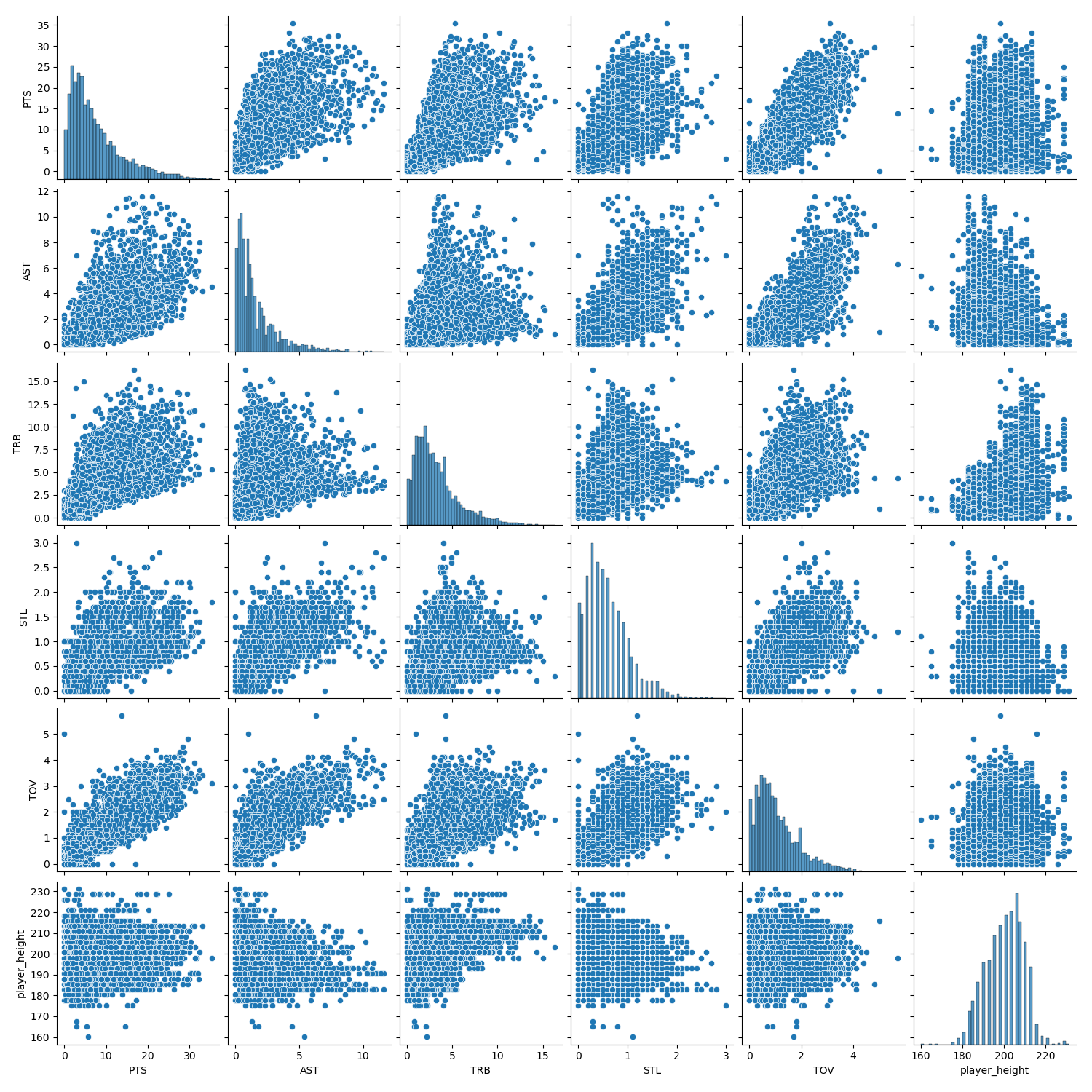
Utilizing a dataset encompassing player heights, points, assists, and rebounds, we’ve observed how the typical stature for each position has shifted over time. Through animated GIF visualizations, it becomes clear that the NBA’s positional archetypes are not static; they transform in response to the game’s changing demands.

Findings
Point Guards (PGs), traditionally the court’s conductors, showed an increasing trend in height correlating with rebounds. This suggests that taller PGs are now more involved in gathering boards, a task historically delegated to larger players. Scoring (PTS) correlations also trended upwards, albeit less consistently, hinting at a more score-heavy role for PGs today compared to the late ’90s.
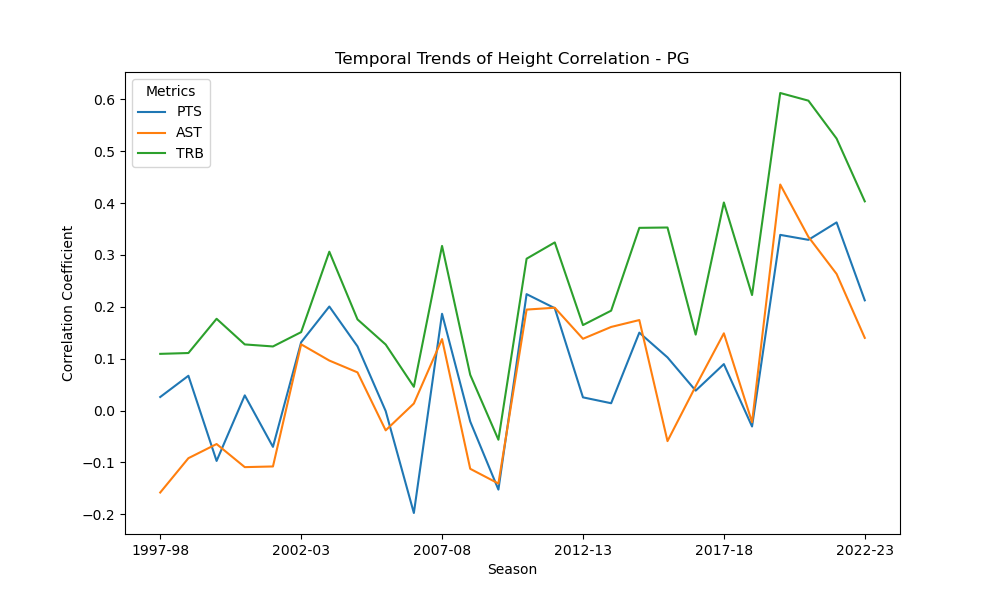
Centres (Cs), displayed a different story. Given their already large stature, the height correlation with performance metrics remained relatively low, indicating that being taller doesn’t necessarily equate to scoring more points or securing more rebounds within this group.
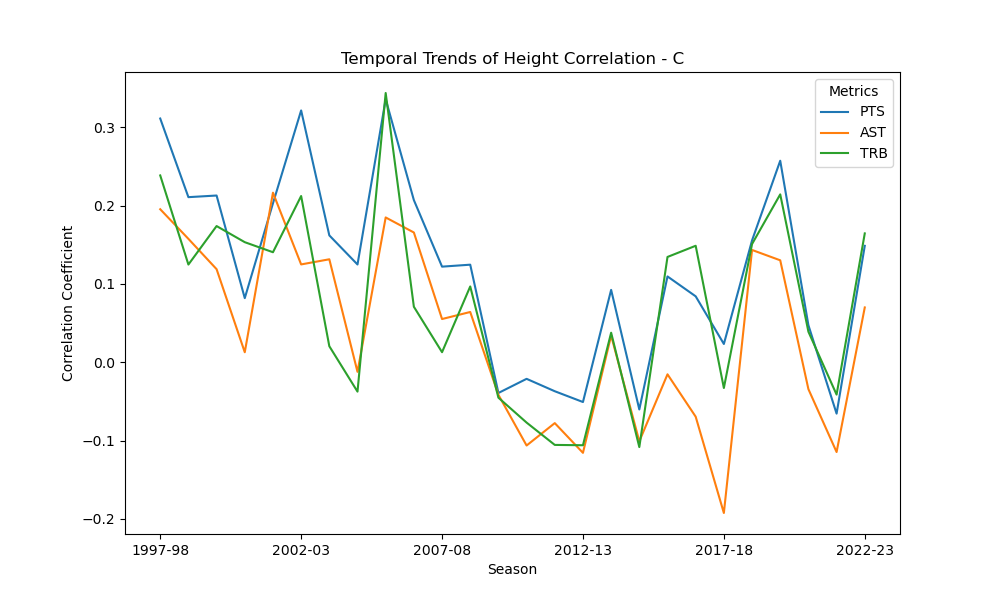
Small Forwards (SFs) data showed a more pronounced upward trend across all metrics. Height is increasingly becoming a factor in scoring, assisting, and rebounding, which could point to the SF position becoming more akin to a ‘jack of all trades’ role on the court.
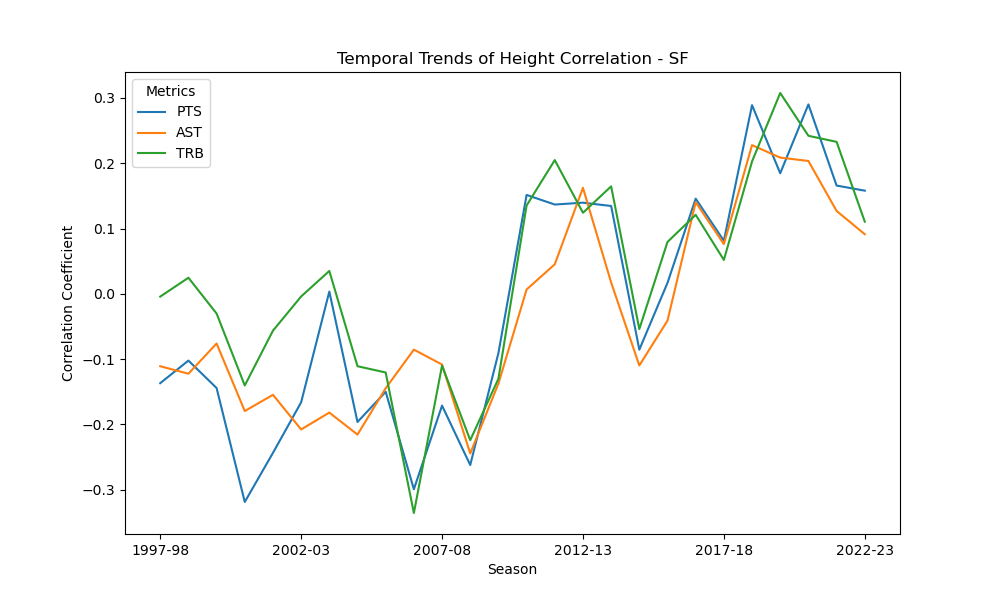
Shooting Guards (SGs) and Power Forwards (PFs) mirrored PGs with a rising trend in rebounding correlation. This might signify a league-wide shift toward valuing height for rebounding across all guard and forward positions. Yet, the correlation between height and scoring for SGs did not present a clear trend, suggesting that other factors like skill and play style are likely more determinant of a player’s scoring ability.
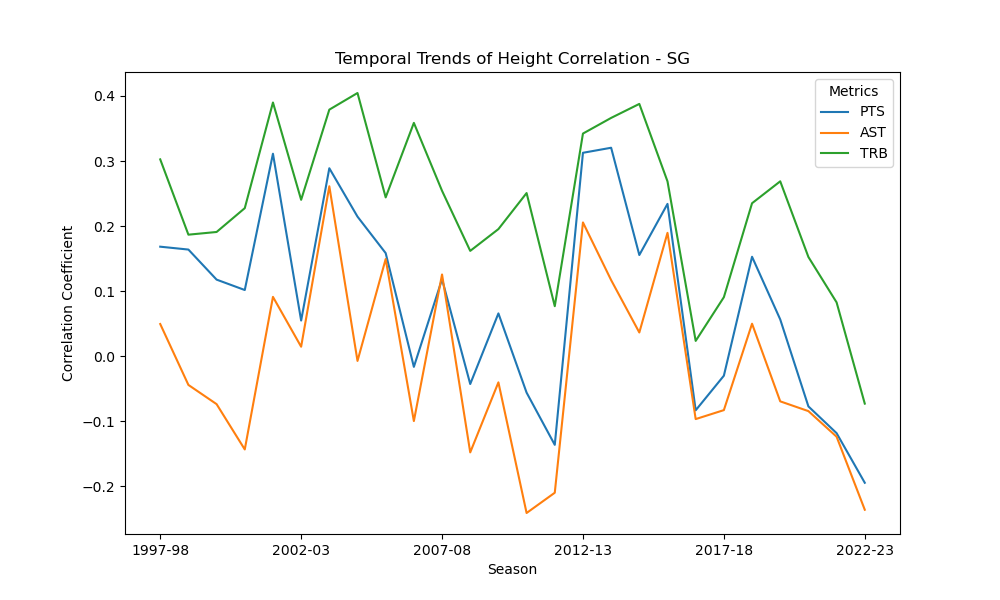
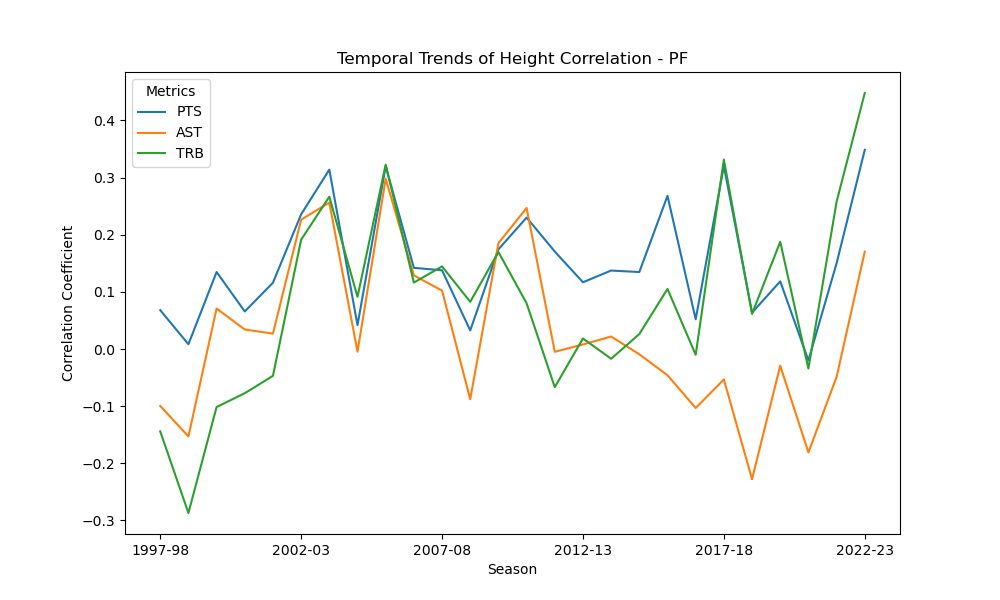
Conclusion
Our findings illuminate the nuances of basketball’s physical evolution. Height remains a coveted asset, but its importance varies depending on the position and the era.
The weak correlation between height and assists across all positions underscores a fundamental truth: the vision and decision-making that fuel playmaking are skills not confined by a player’s size.
These data-driven insights offer a rich context for understanding how basketball strategy and player development have progressed. As the game continues to evolve, so will the physical prototypes for each position, shaped by the tactical imperatives of winning basketball.
In conclusion, while the NBA’s athletes continue to reach new heights—literally and figuratively—the correlation between their stature and their on-court performance is a dance of numbers, revealing the sport’s adaptability and the athletes’ multi-dimensional growth.
Jupyter Notebook link to be provided soon.


